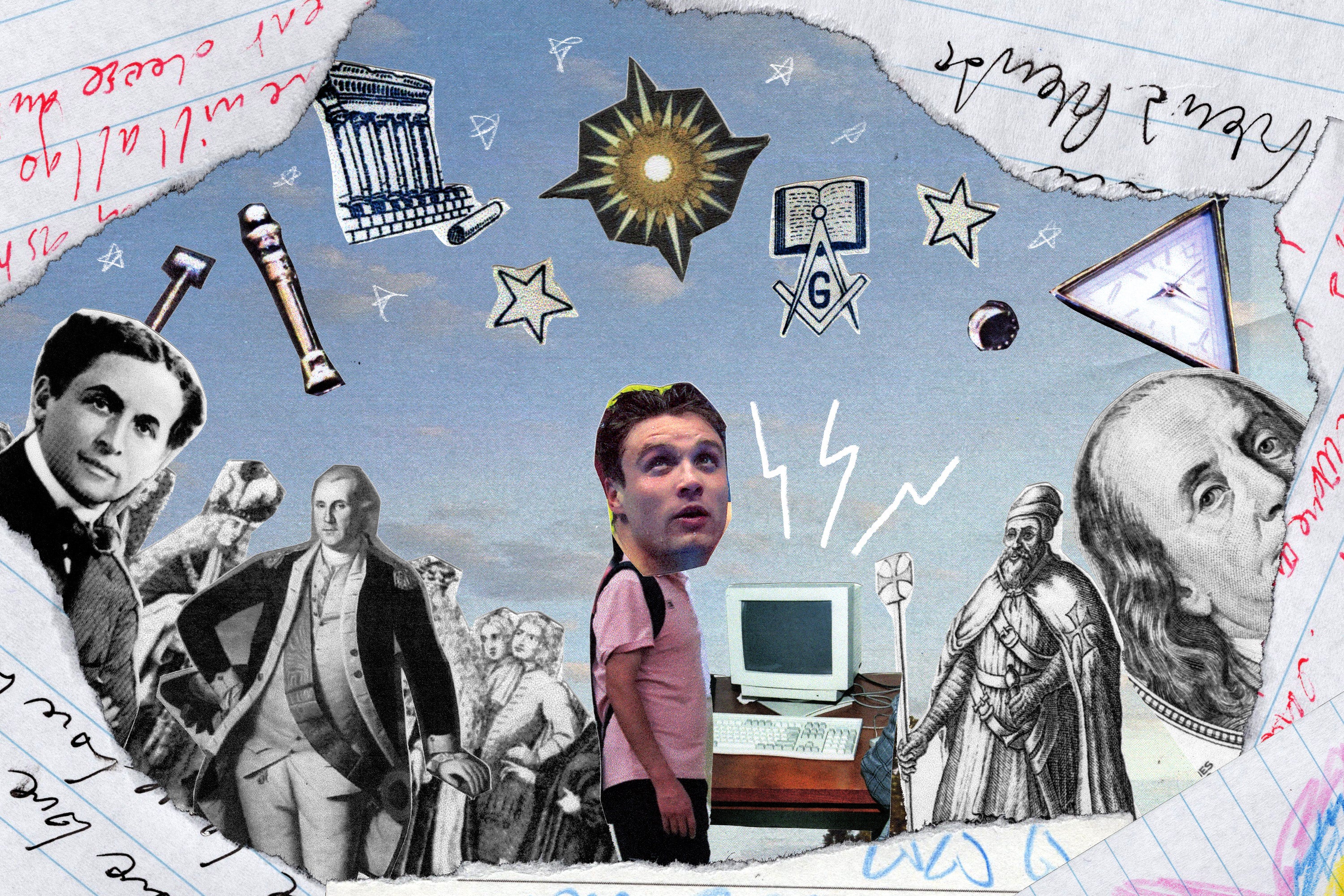Exploring the Mysteries of the Freemason: What You Need to Know
The Freemason, a term typically shrouded in intrigue and debate, stands for a complex tapestry of historic fact and modern misconception. Established in the late 18th century, this secret society was initially rooted in the Knowledge's suitables but has considering that become synonymous with conspiracy concepts about elite control. As we navigate the origins, key figures, and the plain contrast in between myth and truth, one should consider how these stories influence modern assumptions of power and secrecy. What may be revealed through a closer evaluation of these components could test long-held presumptions concerning the shadows that linger in our culture.
Beginnings of the Freemason
The beginnings of the Freemason are steeped in a blend of historical intrigue and ideological eagerness. Established in 1776 in Ingolstadt, Bavaria, by Adam Weishaupt, the group was initially developed as a secret culture targeted at promoting Knowledge suitables such as factor, secularism, and the splitting up of church and state. Weishaupt, a professor of canon legislation, sought to test the prevailing authority of the church and state, which he viewed as overbearing establishments stifling intellectual and personal freedom.
The Freemason looked for to hire influential participants from various societal fields, consisting of politics, academia, and the arts, to cultivate a network devoted to these Knowledge concepts. The society operated under a shroud of secrecy, utilizing coded language and rituals to shield its participants from persecution, specifically provided the repressive environment of the moment. However, the Freemason encountered significant resistance from both governmental authorities and religious institutions, which viewed the group as a danger to their power.
Key Figures and Members
Who were the crucial numbers that formed the Freemason's very early influence and instructions? The Bavarian Freemason, established in 1776 by Adam Weishaupt, became an action to the oppressive societal structures of the moment. how to become a freemason. Weishaupt, a law professor, imagined the organization as a way to promote Enlightenment perfects such as factor, secularism, and equal rights. His initial recruitment initiatives consisted of influential pundits, such as Baron von Knigge, that played a crucial function in broadening the group's membership and organizational framework.
Another significant number was Johann Gottlieb Fichte, a popular philosopher whose concepts on nationalism and education resonated with the Freemason's goals. Although Fichte was not an official member, his philosophical supports affected the team's belief. Furthermore, figures like the author and theorist Johann Wolfgang von Goethe were connected with the broader intellectual movements of the moment, although their straight participation with the Freemason stays discussed.
These vital figures added to the Freemason's early direction, pushing the borders of political and social idea, while their collective efforts aimed to test recognized norms and cultivate a climate of modern adjustment in Europe.
Myths vs. Truth
Numerous mistaken beliefs surround the Freemason, commonly mixing reality with fiction in such a way that obscures its true nature. This secret culture, originally established in 1776 in Bavaria, intended to advertise Knowledge ideals and battle religious and political injustice. The notion that the Freemason remains to apply substantial impact over world events is a misconception. While the group pop over here did exist, it was disbanded in the late 18th century and has not run as a cohesive entity ever since.
One more common myth is that the Freemason consists of a network of elite individuals adjusting global affairs. In truth, several conspiracy theory theories overemphasize the team's importance, connecting unproven intentions to societal trends and occasions. This has led to an oversimplified view of intricate concerns.

Modern Interpretations
Contemporary interpretations of the Freemason usually mirror wider social stress and anxieties and a fascination with secrecy and power. This contemporary lens frequently associates the Freemason with conspiracy theory concepts that recommend a hidden elite coordinates globe occasions, adjusting federal governments and economies for their own gain. Such stories take advantage of an ingrained mistrust of authority, specifically in times of situation or social turmoil.

In addition, some modern interpretations frame the Freemason as an allegory for the intricacies of globalization and the interconnectedness of influential individuals and organizations. This perspective encourages a crucial examination of how power dynamics operate in today's world, highlighting the balance between transparency and secrecy in administration and business practices.
Cultural Influence and Heritage
Influenced by centuries of intrigue, the cultural impact and legacy of the Freemason prolong much past its historical origins. This secret culture, established in the late 18th century, has actually permeated numerous elements More hints of prominent society, from literary works and film to music and art. The idea of the Freemason has progressed right into a sign of conspiracy theories, typically standing for a regarded hidden power manipulating international occasions.
In literary works, authors like Dan Brown have woven the Freemason right into detailed plots, captivating visitors with styles of secrecy and power. Movies such as "National Treasure" and "The Da Vinci Code" better continue the appeal of the society, mixing truth with fiction to create engaging narratives.
The Freemason's influence also prolongs right into music, with artists referencing the company to evoke styles of rebellion and societal critique. This portrayal has actually added to a fascination with the idea of clandestine groups regulating the bars of power, showing social stress and anxieties regarding authority and transparency.
Ultimately, the Freemason's tradition is an intricate tapestry of misconception and reality, shaping assumptions of privacy and control in contemporary discussion. Its long-lasting existence in society underscores humanity's perennial mission for recognizing concealed realities.
Verdict
The expedition of the Freemason reveals an intricate interaction in between historic facts and modern myth-making. Started in the Enlightenment age, this culture intended to challenge overbearing structures, yet its heritage has actually been outweighed by conspiracy concepts that suggest elite manipulation. Comprehending the distinctions in between the initial ideals and modern analyses is essential for understanding the sustaining attraction with the Freemason and its substantial influence on social stories bordering power and secrecy in culture.